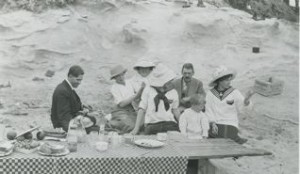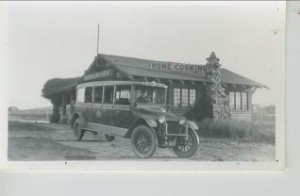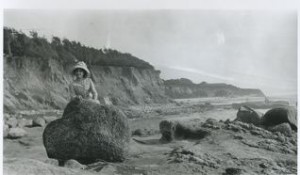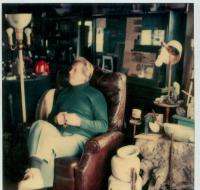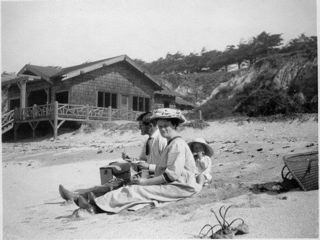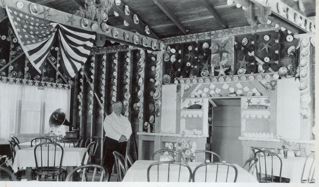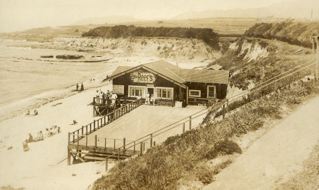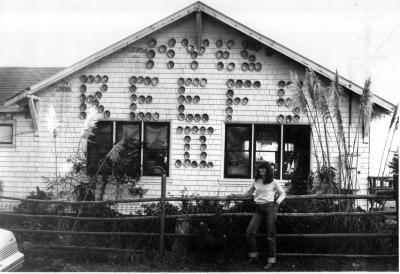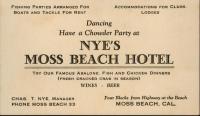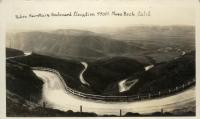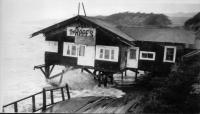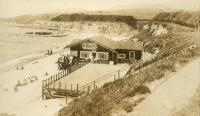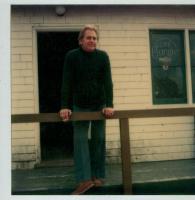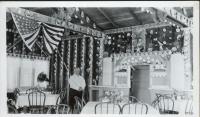A Coastside Fairy Tale
The other day I stumbled across a “storybook” I had forgotten about. The cover said:
Memories of the Fitzgerald Marine Reserve, Moss Beach
Written by a friend* of the Wienkes.
When I was a little girl, in the 1890s, my family visited famous Pebble Beach near Pescadero. We stayed at the Swanton House in town, and in the morning a horse-drawn wagon took us to Pebble Beach where we had a great time sorting through the piles of colorful stones. One was pretty enough to wear as a pendant. I will always treasure the gem.
But there was another very special beach north of Half Moon Bay. We called it Moss Beach for the variety of mosses found there. I learned about the mosses from Dr. David Starr Jordan–the first president of Stanford University. He was a marine biologist who loved studying the living things at Moss Beach.
(Photo: David Starr Jordan and his dog, Jock.) 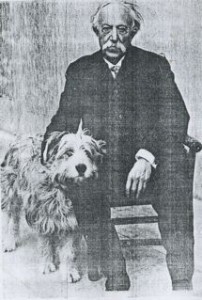
There was so much to discover, graceful sea urchins and rainbow colored shells–abalone. This was a new world for me.
That wasn’t all. Moss Beach was like a rock garden, with unusual formations and patterns everywhere. Some of the rocks had names. I remember Spray Rock and Arch Rock. Where did the rocks come from?
(Photo: This looks like “Rock-Hedge.”) 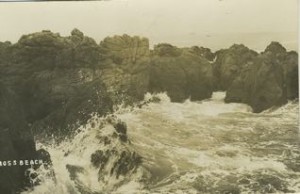
We would spend a week at the Wienke Hotel, run by Mr. and Mrs. Wienke, and their ambitious daughter, Lizzie, who wanted to be a teacher. That’s where we met Dr Jordan-who came to study the reefs, which at low tide, revealed fantastic sea life, unbelievable marine curiosities. The Wienkes were wonderful hosts and the remarkable beach only steps away.
(Photo: The Wienke’s Hotel in Moss Beach.)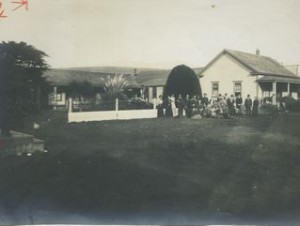
I wish I had paid more attention to the guests who stayed at the Wienke’s hotel. They did sign a big book, a register of historic names.
Mr. Wienke had a plan to make Moss Beach, the town, as beautiful as the unique beach. He spent hours planting hundreds of cypress trees and one of the lanes was called Wienke Way.
My family lived in San Francisco, and we took the exciting Ocean Shore Railroad tour to Moss Beach. There was the prettiest train station there. And if you wanted to return to the City, the Red Star Auto driver fares weren’t high. He kept his car parked at the train station so he wasn’t hard to find!
Of course, the highlight of the train ride, was traveling over Devil’s Slide, enjoying ocean views I’d never seen before–and wondering if we’d make it to Moss Beach on time. More than once some big boulders tumbled onto the tracks and the train had to back up to Pacifica. That’s what I heard–it never happened to us.
Not far from the Wienke’s charming retreat, on the sandy beach, Charlie Nye built a cafe and dance platform. Right there by the reefs teeming with sea life. Charlie was the blind man who told stories about famous writers like Jack London renting his rowboats.On hot days the beach was crowded with picnickers.
(Photo: Nye’s on Moss Beach on a hot Coastside day.) 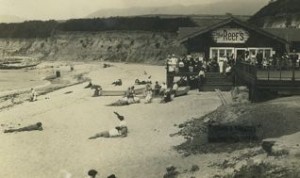
Everybody wanted to investigate the reefs at low tide, and the children played hide-and-seek games around the rocks, some of which were enormous enough to sit on.
My uncle took some of the pictures you see here.
* If you wonder who the writer of the Coastside Fairy Tale is, the “friend” of the Wienke’s is me, June.

